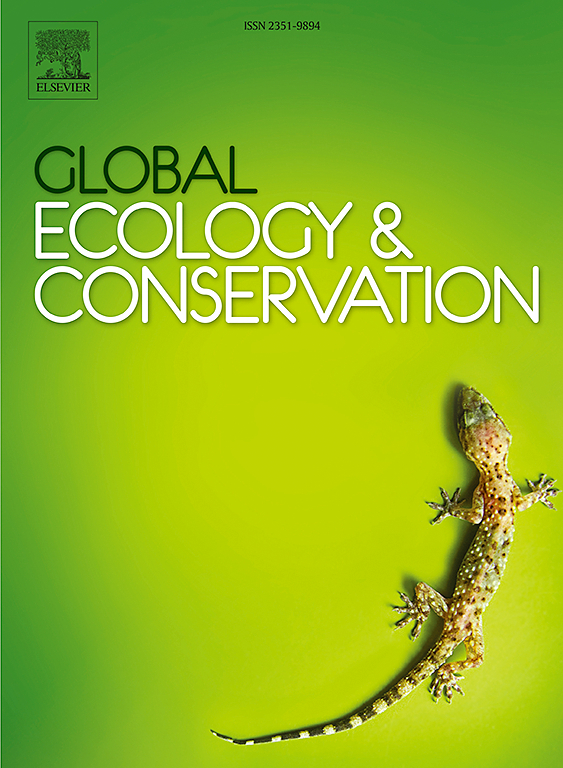Multi-primer-based environmental DNA survey for vertebrate biodiversity monitoring in protected island wetlands
IF 3.5
2区 环境科学与生态学
Q1 BIODIVERSITY CONSERVATION
引用次数: 0
Abstract
Considering the natural and anthropogenic threats to natural ecosystems, monitoring the biodiversity of the protected areas and their subzones is necessary. The Korea National Park Service conducted the Natural Resource Survey (NRS) to monitor biodiversity in Korea’s national parks; however, various species and the extensive survey regions, including inaccessible islands and mountains, hinder the consistent collection of data within limited resources. Environmental DNA (eDNA) might be a potential solution to provide non-invasive, standardized, and efficient biodiversity monitoring. This study aimed to assess the effectiveness of eDNA metabarcoding for monitoring vertebrate biodiversity in ecologically sensitive and inaccessible protected island wetlands. We detected 35 vertebrate species in Jangdo and Baenanggimill wetlands of the Heuksan Archipelago, South Korea, using three primer sets specific to birds, mammals, and fish. Combining eDNA with NRS data increased species richness by 35.3 % in Jangdo Wetland and 10.2 % in Baenanggimill Wetland, demonstrating the efficiency of multi-primer eDNA in rapidly detecting species with minimal intervention. Moreover, eDNA identified five species that are difficult to see due to their underwater habitat or morphological similarity before the second round of NRS. However, regarding bird species detection, aqueous eDNA had lower recall than NRS, demanding technological improvements to enhance its applicability. Our findings indicate that eDNA might complement traditional survey methods to enhance biodiversity monitoring in protected areas, particularly in challenging environments such as remote island wetlands. We hope this work contributes to improving the planning of conservation and restoration efforts for threatened ecosystems.
求助全文
约1分钟内获得全文
求助全文
来源期刊

Global Ecology and Conservation
Agricultural and Biological Sciences-Ecology, Evolution, Behavior and Systematics
CiteScore
8.10
自引率
5.00%
发文量
346
审稿时长
83 days
期刊介绍:
Global Ecology and Conservation is a peer-reviewed, open-access journal covering all sub-disciplines of ecological and conservation science: from theory to practice, from molecules to ecosystems, from regional to global. The fields covered include: organismal, population, community, and ecosystem ecology; physiological, evolutionary, and behavioral ecology; and conservation science.
 求助内容:
求助内容: 应助结果提醒方式:
应助结果提醒方式:


